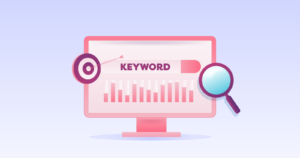Google’s continued integration of AI into its search ecosystem is reshaping how users interact with content—and how marketers approach SEO. In 2025, the landscape has shifted again, and the Semrush AI Overviews Study provides critical insights into these changes. This article breaks down what the study reveals and what it means for SEO professionals aiming to stay ahead in Google’s evolving search environment.
What Is Google’s AI Overview?
AI Overviews, formerly known as Search Generative Experience (SGE), are enhanced search results powered by artificial intelligence. They provide users with quick, synthesized answers pulled from multiple sources—cutting through traditional ranking hierarchies.
These summaries often appear above organic results, making them prime digital real estate for visibility. But for many SEO experts, AI Overviews represent both opportunity and challenge.
Key Findings from the Semrush AI Overviews Study (2025)
Semrush analyzed 75,000 keywords across multiple industries, observing how often AI Overviews appeared and which types of content were featured. Here are the standout findings:
1. AI Overviews Triggered in 46% of Queries
Nearly half of the studied search queries now return AI-generated summaries. This trend is particularly strong in sectors like health, finance, education, and travel.
2. Domain Authority Still Matters
Semrush found that high-authority domains (with scores above 60) were featured in AI Overviews far more frequently. Google still prioritizes trust and credibility.
3. Content Structure Impacts Inclusion
Pages with clear headings, schema markup, and concise summaries were more likely to be included in AI Overviews. Long-form content without structured data was largely ignored.
4. New Domains Are Gaining Ground
Interestingly, newer websites—those under three years old—made up 12% of AI Overview sources, signaling that Google isn’t just leaning on legacy websites.
What This Means for SEO in 2025
The shift toward AI-curated content in search results demands a new SEO strategy. Traditional organic rankings are no longer the sole path to visibility. Here’s what marketers need to focus on:
1. Optimize for Featured Inclusion, Not Just Rankings
Your goal is no longer just “position one.” Instead, focus on content that answers questions directly, uses semantic keywords, and is backed by authoritative sources.
2. Emphasize E-E-A-T (Experience, Expertise, Authoritativeness, Trust)
Google’s Search Quality Rater Guidelines emphasize E-E-A-T more than ever. Ensure your content is:
- Written by verified experts
- Supported by external references
- Transparent about authorship and sources
3. Use Semantic SEO and LSI Keywords
Latent Semantic Indexing (LSI) keywords play a major role in content relevance. For example, in this article, we’re also incorporating terms like:
- Google AI Overview study
- 2025 SEO trends
- Semrush data analysis
- Search generative experience
- AI-generated search results
- SEO for AI Overviews
- Google SGE update
- AI in search ranking
- Organic visibility in AI search
- E-E-A-T SEO best practices
These LSI keywords improve contextual relevance for AI systems indexing your page.
Actionable Tips to Rank in Google’s AI Overviews
To appear in these high-visibility summaries, consider these proven strategies:
✅ Use Q&A Format
Write in question-and-answer style where appropriate. AI Overviews favor content that directly responds to search intent.
✅ Implement Structured Data
Use FAQ schema, How-To schema, and Article schema to help Google’s AI understand your content.
✅ Build Topic Clusters
Organize your blog or site around pillar pages with interconnected subtopics. This increases your topical authority, a major signal for AI inclusion.
✅ Refresh Evergreen Content
AI favors fresh, updated information. Revisit your top-performing content regularly and update statistics, examples, and links.
How This Affects SEO Tools and Data Tracking
One of the more surprising findings of the 2025 Semrush study is the inconsistency of visibility tracking in AI Overviews. Traditional SEO metrics like click-through rates (CTR) and average position are becoming less reliable when AI answers dominate the top fold.
Pro Tip: Use AI-aware tools
Semrush has rolled out new tools to monitor AI Overview visibility, including metrics like:
- Percentage of your keywords triggering AI Overviews
- Your domain’s inclusion rate in AI summaries
- Comparison with competitor visibility in AI answers
Final Thoughts: The AI SEO Revolution Has Arrived
The Semrush AI Overviews Study is more than just a report—it’s a roadmap. As Google continues to integrate AI deeply into its search engine, SEO professionals must adapt or risk irrelevance.
To rank in 2025, your strategy must shift from solely targeting organic rankings to earning AI recognition. That means creating high-quality, structured, expert-backed content that directly answers user queries and aligns with Google’s evolving algorithms.
Stay ahead, stay optimized—and let the data guide your next SEO move.
Frequently Asked Questions (FAQs)
Q: How can I tell if my content appears in Google AI Overviews?
A: Tools like Semrush now offer AI Overview tracking features. You can also manually check by running target queries in Incognito mode.
Q: Do backlinks still matter in 2025?
A: Yes, but topical authority and content structure now play a greater role in AI Overviews.
Q: What types of pages are excluded from AI Overviews?
A: Pages lacking clear authorship, those with poor structure, or overly promotional content tend to be ignored.



